#RENASCENCE Magazine
Text
A Letter To My Younger Self / This Shit Is Crazy
A Letter To My Younger Self / This Shit Is Crazy

View On WordPress
1 note
·
View note
Text
Staging Nuclear Dread in “Oppenheimer” and “Doctor Atomic”
How do you depict an event that has left a psychological scar—in some cases, physical scars—on almost everyone on the planet?
— By Alex Ross | July 25, 2023
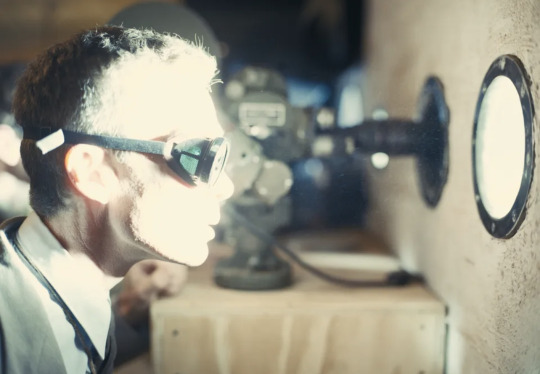
Cillian Murphy as J. Robert Oppenheimer. Photograph courtesy Universal Pictures
The late Daniel Ellsberg, in his book “The Doomsday Machine,” drew attention to a curious conversation that took place between Albert Speer and Adolf Hitler in the summer of 1942, on the subject of atomic apocalypse. Speer had asked Werner Heisenberg, the physicist in charge of the faltering German nuclear program, whether an atomic explosion could lead to an uncontrolled chain reaction. Heisenberg did not rule it out. Speer wrote in his memoir “Inside the Third Reich”:
Hitler was plainly not delighted with the possibility that the earth under his rule might be transformed into a glowing star. Occasionally, however, he joked that the scientists in their unworldly urge to lay bare all the secrets under heaven might someday set the globe on fire. But undoubtedly a good deal of time would pass before that came about, Hitler said; he would certainly not live to see it.
In fact, as Ellsberg pointed out, Hitler killed himself less than three months before the first atomic device was detonated, on July 16, 1945, at what is now the White Sands Missile Range, in New Mexico. The physicists of Los Alamos, led by J. Robert Oppenheimer, had also pondered the prospect of an atmosphere-igniting chain reaction, although they put the chance of such an outcome at less than three in a million. (Enrico Fermi, less sanguine, reportedly placed the odds at 10–1.) Ellsberg noted that these dire discussions were never shared with civilian authorities. It’s unlikely that either Franklin Delano Roosevelt or Harry Truman would have called off the atomic program as a result, yet the withholding of information struck Ellsberg as symptomatic of a moral void. The scientists were “engaged in a longer-term gamble imperiling the survival of humanity.”
Several times in the past eight decades, the world has come shudderingly close to losing that gamble—closest of all during the Cuban missile crisis, when the Air Force general Curtis LeMay urged a strike on Soviet missile positions in Cuba. Richard Rhodes, the author of “The Making of the Atomic Bomb,” wrote in this magazine, in 1995, “If John Kennedy had followed LeMay’s advice, history would have forgotten the Nazis and their terrible Holocaust. Ours would have been the historic omnicide.” To which one can add: if any historians remained. The fact that no nuclear weapon has been used in combat since August 9, 1945, is the result more of pure chance than of accumulated wisdom. Ellsberg concluded tersely, “This is not a species to be trusted with nuclear weapons.”
The test shot that Oppenheimer named Trinity, in an allusion to John Donne’s sonnet “Batter my heart, three-person’d God,” has been reënacted many times onscreen. Christopher Nolan’s “Oppenheimer” is the latest in a series of attempts that go back to the stiff Hollywood docudrama “The Beginning or the End,” released in 1947. Three adaptations appeared in the nineteen-eighties, a time of renascent nuclear alarm: the BBC miniseries “Oppenheimer,” the television movie “Day One,” and Roland Joffé’s film “Fat Man and Little Boy.” But Nolan’s most formidable competition is, perhaps surprisingly, an opera: John Adams and Peter Sellars’s “Doctor Atomic,” which had its first performances in 2005, in San Francisco.
In the months before the “Atomic” première, I chronicled the making of the opera and visited major locales of Manhattan Project history, including the Trinity site. No sulfurous atmosphere lingers at the place: it’s a patch of high desert like any other. If you look down, though, you see a couple of sheared-off metal stubs—all that remains of the hundred-foot tower that held the bomb. The top of each stub is rippled, like whipped cream. I thought back to the early nineteen-eighties, when I was a teen-ager in Washington, D.C. Ronald Reagan was cracking jokes about global thermonuclear war—“We begin bombing in five minutes”—and my classmates and I were discussing what we would do if the sirens began to sound. One friend said, “I’m going to walk toward the Washington Monument and close my eyes.”
How do you stage an event that has left a psychological scar—in some cases, physical scars—on almost everyone on the planet? Mushroom clouds long ago became pop-culture signifiers, detached from the hellish violence that they represent. Stanley Kubrick made them the concussive punch line of “Dr. Strangelove.” In Wes Anderson’s “Asteroid City,” they become one more knickknack of nineteen-fifties décor, alongside Formica countertops and red-and-white checkered tablecloths. What’s impossible to capture is the awe that the sight induced in its first observers, even though most of them had a reasonably good idea of what to expect.
“Oppenheimer,” despite the huge resources that are put into play, presents an oddly rushed, jumbled vision of Trinity. Part of the difficulty is that the Manhattan Project occupies only the middle third of a sprawling bio-pic, one that combines the stylistic incoherence of Oliver Stone (“JFK,” “Nixon”) with the didactic insistence of William Dieterle (“The Story of Louis Pasteur,” “The Life of Emile Zola”). The fraught hours leading up to the explosion—an overnight thunderstorm, bets on the size of the blast, nagging fears of Armageddon—are confined to about eight minutes of screen time. Nolan’s preference for hectic cutting and closeups means that we never fully register the blank immensity of the landscape. The score, by Ludwig Göransson, tries to heighten the tension with insistently driving string textures, which may owe something to Adams’s early minimalist piece “Shaker Loops.” But the sequence is no more suspenseful than dozens of other countdowns in cinematic history, going back to Fritz Lang’s “Woman in the Moon,” from 1929.
“Doctor Atomic,” in contrast, confines itself to the weeks leading up to Trinity, arriving at the eve of the test before the end of the first act. Both the opera and the film include a scene in which Oppenheimer is seen alone at the tower, communing with the tentacled bomb. Cillian Murphy, who plays the physicist in the movie, gazes at it silently, his face wavering between fascination and terror. In “Atomic,” Oppenheimer sings a gravely lamenting aria titled “Batter my heart,” which the baritone Gerald Finley has delivered with matchless intensity in various productions. (Oppenheimer was a voracious reader, and the “Atomic” libretto intermingles documentary material with a selection of his favorite texts.) Opera’s capacity to voice interior monologues has redoubled force as we confront the sheer weirdness of the association: Donne’s poem of divine assault and ravishment renders Trinity as the site of some sort of masochistic ritual.
Oppenheimer’s florid literary self-stylizations are essential to the legendary status that he has acquired. His most grandiose gesture was to claim, years after the fact, that the detonation had put him in mind of the Hindu god Vishnu: “Now I am become Death, the destroyer of worlds.” This loose translation of the Bhagavad Gita is recited twice in “Oppenheimer,” the first time during an inadvertently hilarious sex scene. “Atomic,” wisely, leaves the line out. Mythological allusions have proliferated in tellings of the physicist’s life. In Nolan’s film, he is called an “American Prometheus,” in keeping with the title of Kai Bird and Martin J. Sherwin’s Oppenheimer biography. “Atomic,” for its part, arose in response to San Francisco Opera’s request for a work about an American Faust figure. Such narratives risk personalizing a historical situation that has little to do with one man’s pretentious inner demons. Oppenheimer capably led the building of the bomb, but he did not conceive it, perfect it, or order its use.
“Atomic,” in its final minutes, resolves the Oppenheimer problem by letting him recede into the background. In a nod to Einstein’s theory of relativity, Adams bends time during the countdown so that five minutes are stretched out to almost fifteen. The orchestra sputters and clicks through overlapping, irregular pulses. The music seems at once to accelerate and slow down, devolve into noise and fade to silence. The explosion takes the form of a darkly shimmering chord for massed strings, with a flash of winds and muted brass on top. This, Adams told me in 2005, was the test seen from afar. It evokes what Dorothy McKibbin, the all-knowing gatekeeper of Los Alamos, witnessed from a peak two hundred miles to the north: “The leaves of the green native trees were kind of shining with the gold.” After that false dawn, quiet bell chords toll, and we hear the voice of a Japanese woman begging for water, some of her words taken from John Hersey’s “Hiroshima.” Music’s unparalleled capacity to generate dread leaves a deeper mark than any visual effect could achieve, and the abrupt shift in sonic geography wrenches our anxieties away from the Los Alamos perspective.
In the film, too, Trinity is implicitly transmuted into Hiroshima: at a celebratory gathering at Los Alamos, Oppenheimer hallucinates radiation burns on his colleagues’ faces. Yet Nolan generally pays little heed to the issue of fallout, which Los Alamos doctors tried to raise and which Leslie Groves, the chief of the Manhattan Project, dismissed. “Doctor Atomic” takes note of Groves’s indifference—he asks a physician, “What are you, a Hearst propagandist?”—and Adams’s music depicts radioactive scourings of the body. Sellars, in a revival of the opera in Santa Fe in 2018, heightened the theme by bringing onstage members of the Tularosa Basin Downwinders Consortium, who are seeking compensation for the suffering that fallout inflicted on communities downwind of the blast. The toll of Trinity is difficult to measure, but a steep rise in infant death in New Mexico in 1945 speaks for itself.
Whether any of this work, cinematic or musical, truly honors nuclear victims or contributes to a recognition of American infamy is a matter of debate. Casting the story as the tragic arc of a mythic individual not only obscures the collective nature of the effort but amounts to an exercise in scapegoating. Yet myths can sometimes show us the recurrence of fatal patterns that a more unsentimental approach might overlook. And Faust, who made a contract with the Devil, is surely a better archetype than Prometheus, who stole fire from the gods. Even on a hundred-degree day, Trinity possesses a chilly aura: in that place, a new kind of evil came into the world. ♦
0 notes
Text
2 REMARKABLE AUTHORS DURING THE PERIOD OF AMERICAN REGIME

Aurelio Valenzuela Tolentino (October 15, 1869 – July 5, 1915) was a Filipino playwright, poet, journalist, and revolutionary. His works at the turn of the 20th century depicted his desire to see Philippine independence from its colonizers. He was arrested twice, first by the Spaniards and later by American forces. He wrote and directed the anti-imperialist play Kahapon, Ngayon at Bukas (Yesterday, Today and Tomorrow), which led to his arrest in 1903.
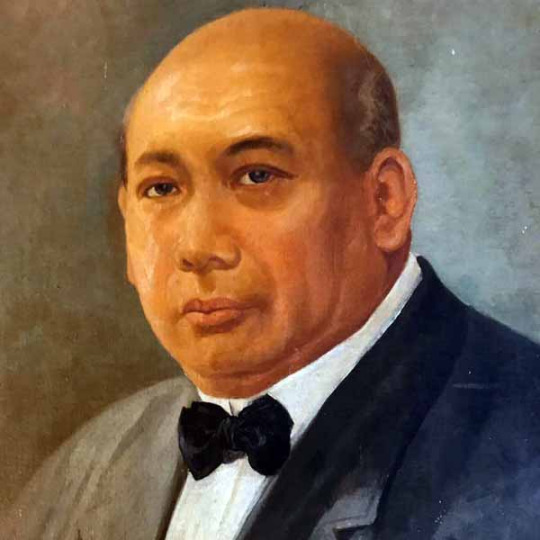
Severino Reyes (February 11, 1861 – September 15, 1942) was a Filipino writer, playwright, and director of plays. He used the pen name Lola Basyang. He was nicknamed "Don Binoy".
Reyes wrote 26 zarzuelas and 22 dramas in his career. He is known as the "Father of Tagalog Plays" and as the "Father of the Tagalog Zarzuela".
Reyes helped found the Liwayway magazine in 1922, and is recognized for pioneering the Tagalog literary renascence during his lifetime. His stories under the pen name Lola Basyang were the magazine's most widely read feature.
RETRIEVED FROM: https://peoplepill.com/people/aurelio-tolentino
RETRIEVED FROM: https://peoplepill.com/people/severino-reyes
0 notes
Text
Twilight director Catherine Hardwicke was once going to direct th Maximum Ride movie.
Maximum Ride could've been just as ICONIC as Twilight.
#maximum ride#james patterson#catherine hardwicke#twilight#twilight renascence#can you imagine!#the blue tint#max would call fang spider monkey#fang WOULDN'T HAVE BEEN WHITE#they could have had a cute magazine spread with all the cast#mid 200s was the only time this movie could've been decently made
41 notes
·
View notes
Quote
…Grief, unlike the first months of numbed acceptance, full of the stark awareness of the utter finality and its everyday emptiness; grief full, at last, of the total realization of the true meaning of absolute irrevocability. And to whom could she explain the contest she had vowed to have with time? That awful contest she had promised herself never to let go of. Time indeed, she had sworn, months before Pip actually died, would never have its scar back. She would hold on to it, nourish it, keep it healthy, alive—vibrant. She would feed it with memory—days, nights—always. It was all that she would have left and she would keep it, agonizingly alive inside of her. This scar that was forged from the death of the woman she had loved.
Extracted from “Renascence” a short story written by LORRAINE HANSBERRY in 1958 under the pseudonym “Emily Jones” for the gay magazine ONE.
19 notes
·
View notes
Text
Shadows Of Your Mind


Shadows Of Your Mind magazine was born out of curiosity in July 2017 with the first issue launching subtly on to the alternative media scene in October the same year. A further five issues followed until March 2019 when - for logistical and creative reasons - the magazine went into a state of hibernation. Now, like the proverbial phoenix, Shadows Of Your Mind is reborn to bring you more of the same great features and interviews with renowned individuals in the ufology and paranormal arenas.
Shadows Of Your Mind nasceu por curiosidade em julho de 2017, com a primeira edição sendo lançada sutilmente no cenário da mídia alternativa em outubro do mesmo ano. Outras cinco edições se seguiram até março de 2019, quando - por razões logísticas e criativas - a revista entrou em estado de hibernação. Agora, como a proverbial fênix, Shadows Of Your Mind renasce para trazer a você mais dos mesmos excelentes materiais e entrevistas com especialistas renomados da ufologia e das arenas paranormais.
Recomendo esta revista britânica editada por Dave Partridge que sempre traz alentadas e abalizadas matérias também nas searas da história, arqueologia, mitologia, religiões, etc. Ela é produzida denodadamente e posta à disposição dos interessados para ser baixada de graça, isso mesmo, sem qualquer ônus, restrição ou exigência. Somente são aceitas contribuições voluntárias, muito bem vindas aliás, da parte de quem puder ajudar.
Listo abaixo todos os links para ler e baixar em PDF as sete edições digitais já lançadas até agora. Basta clicar sobre os números:
Issue #1 - Nov/Dec 2017
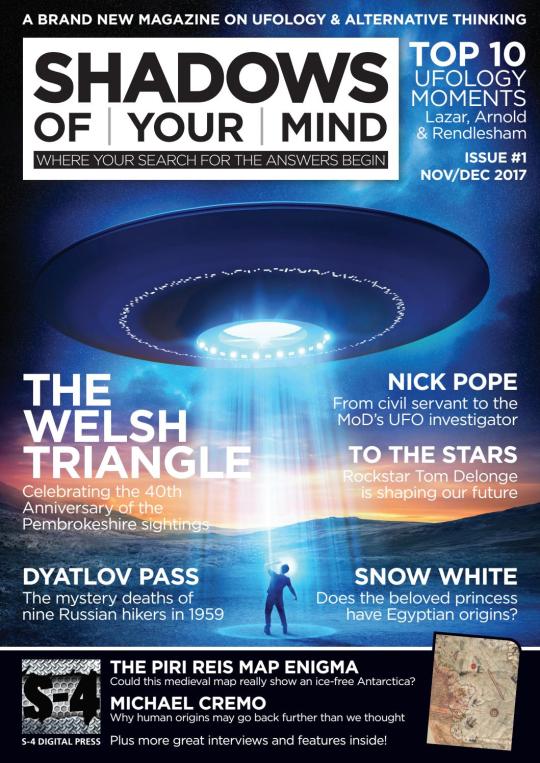
Issue #2 - Jan/Feb 2018

Issue #3 - Apr/May 2018
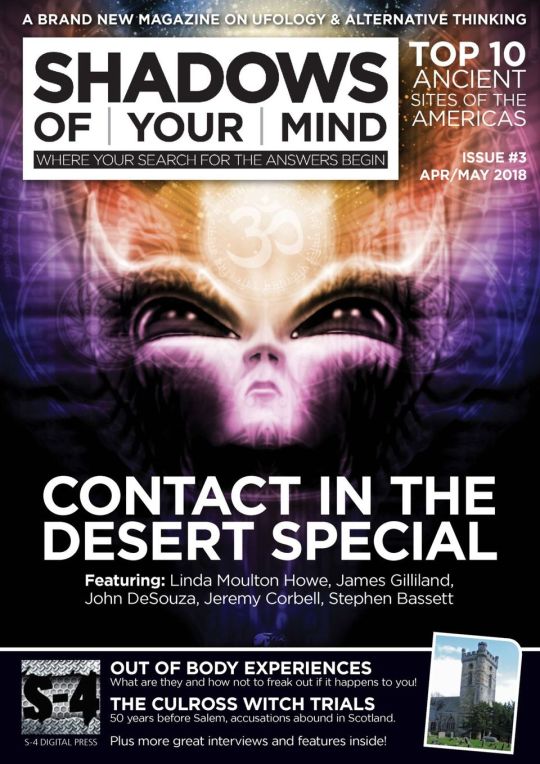
Issue #4 - Jul/Aug 2018
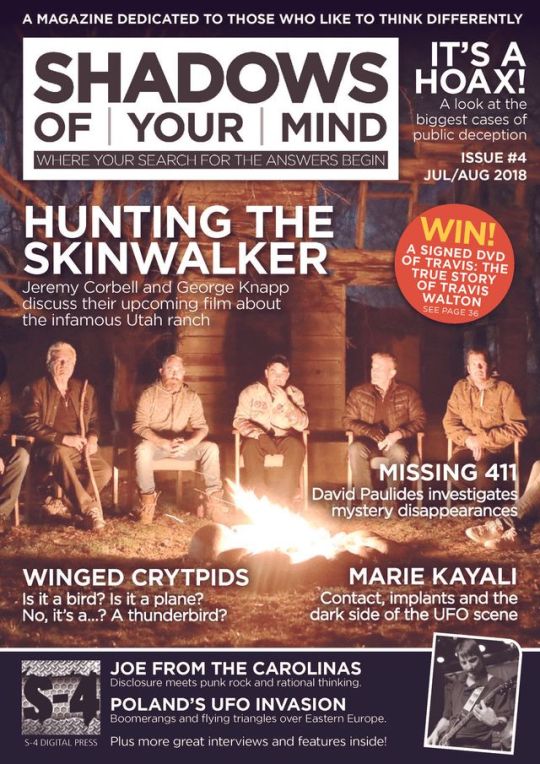
Issue #5 - Oct/Nov 2018

Issue #6 - Mar/Apr 2019


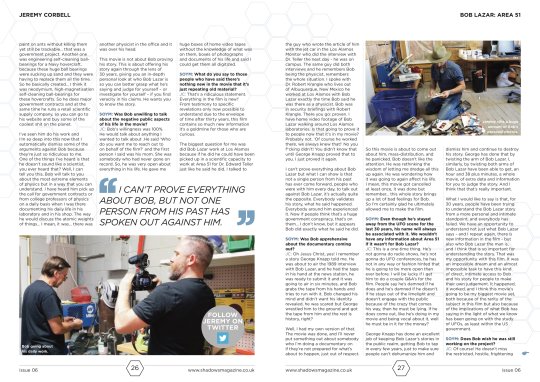
Issue #7 - 2020

2 notes
·
View notes
Photo

Renascence ~ from “Coronet Magazine”, January 1938 ~ Nell Dorr (American photographer, 1893-1988)
24 notes
·
View notes
Text



“First Love / Late Spring”, Mitski // Illustration for Scott Dunn Magazine, Charlotte Ager // “Renascence”, Edna St. Vincent Millay
#parallels#lyric parallels#poetry#charlotte ager#edna st. vincent millay#mitski#mitski miyawaki#renascence#bury me at makeout creek#first love / late spring#let me walk to the top of the big night sky#night sky#art#art parallels
14 notes
·
View notes
Text
This is an interesting article presenting the (rightist-marked) “NPC” meme as the natural heir to the Frankfurt School critical theory critique of mass culture as a dehumanizing force of control
One more point in favor of “current dynamics are not aberrant but rather return to the norm after the aberrant postwar Golden Age” – go back before WWII and America was ABSOLUTELY a country of overcrowded cities full of hobo jungles and pompous elites and henpecking scolds and hordes of ethnicized poor and nervous young college graduates scrambling to hold on and taking their nervous energy out on sex with a demimonde of lipstick and dresses and testicles and dicks, all surrounded by a sea of rural tedium and despair.
So maybe all that was just a Boomer bubble. One that started before The Sixties, though. The postwar right realized that kinda society was a breeding ground of communism though and the first step was throwing off the Popular Front culture.
“Stifling mass culture of the 50s” gets coded right these days, but remember that Ayn Rand (who’d lived through a national culture going commie and stifling before) had big counterculture (yes!) hits in the 40s and 50s with books where a pompous, clucking clique of “progressive” mediocrities dripping syrupy moralism dominated popular media and used it to suppress the liberatory potential of superior individuals and their ideas.
The scene in Atlas Shrugged where the protagonists blow up a bridge and send a trainful of them plunging to their firey comeuppance was the Day of the Rope of its day; in reality the payoff was the McCarthyite Second Red Scare cleansing them from positions of cultural influence, clearing the way for the Counterculture
Which rose, struggled, got overconfident, got knocked back, but returned in the 90s to devour Square Culture for once and all, and dissipated as people no longer realized it needed investment in maintaining
Or were devoured by, “selling out” was really a much higher-profile concept before say 2005. Why’s Gavin McInnes scrambling to build an apparatus of cultural influence? He already built one, with VICE! And sold it out. (For like a billion dollars split a few ways, and it’s not like “magazine from 2008 with a website and publishing arm and events w/ party photographers” is a powerful form rn)
Also, recent revelations are implying that many major figures stopped pushing boundaries in public too hard in return for a lifetime supply of 19±5 year olds soooo
But ANYWAY, does show that the theoretical energy is more on the upstart right these days. Maybe that’s ‘cause theory is what you do out of power – at the same time last decade’s efflorescence of left theory, Jacobin to n+1 to Rhizzome, is being increasingly discarded by a renascent left infatuated with its own dynamic action.
72 notes
·
View notes
Text
I’m scared
So, here in Brazil we are voting for president and congress. Very well, but that’s some points I’d like to shoutout:
1) a lot of conservatives were elected! São Paulo is the richest and most developed state here, and yet is the one who votes the worst! People that share fake news were elected (Kim Kataguri, Mamaefalei, ALEXANDRE FROTA). And then for senator: Suplicy has lost, and yet he was a great politician (I read that people were trying to avoid PSL [Bolsonaro’s Party], so voted on Mara Gabrilli [PSDB], so Suplicy lost).
2) The South is the most developed region here in Brazil, and yet it can be so... fascist. Only in the Northeast Bolsonaro was defeated. (People in the south say that people in the Northeast don’t know how to vote).
3) Haddad has few/little chances to win against him, so that scares me. Anyways: we need to bring anyone from the left and anyone who has common sense to stop Bolsonaro. I like Haddad, but I don’t think PT would be a good choice for now - Boulos and Marina, otherwise, are awesome (Marina - in my opinion - has the best proposals to women’s [including more political participation]).
4) this elections were tragic: people with GUNS! People filming the urns (it’s a CRIME). My cousin posted a photo on WhatsApp: a gun with the saying “let’s go Bolsonaro”.
5) now we need to fight against the fascism, on my Twitter a lot of LGBTQ+ people/black people/women were in despair (I’m crying and shaking), because Bolsonaro and his speech are made of hate for the minorities. A lot of people saying that we need to resist and that we need to stay calm, fight back and don’t hurt ourselves.
6) people wanted Ciro Gomes (I like him), but he only got 11(or 12)% of the votes, so... (I was praying so he could win today). I wanted Boulos, Manu (she’s Haddad’s vice), Haddad and Marina as my presidents!
7) this election is marked by fascism and anti-leftism. It’s clear.
Edit: I forgot to say that Bolsonaro PRAISES dictatorship and a torturer (Brilhante Ustra)
Edit 2: please, feel free to add more things to this.
Edit 3: PEOPLE BROKE THE URNS: they were trying to take away the number 7 (Bolsonaro is 17).
Edit 4: a week or two before the elections we had a republican, feminist and anti-fascist movement: #EleNão (#NotHim).
Edit 5: Dória (PSDB) and Marcio França (PSB) are technically tied, so (like the president) we’ll have another day to vote. I’m happy because I don’t want Dória, he was a terrible prefect (he didn’t even finished the mandate, and PSDB isn’t a good party, so...)
Edit 6: Cabo Daciolo was FASTING ON A HILL and got more votes then Marina! I mean, COME ON GUYS!
Edit 7: Boulos got 0,5% of the votes (my candidate, I love him and the work that he does, but I like Natalia the most)
Edit 8: Bolsonaro has a general as a vice. And this general (Mourão) said that he could give a self-defeat, extinguish the thirteenth (a salary people receive) and said that his grandson (or nephew) was the whitening of the nation. Besides: he said that homes where the mother or the grandmother were the leader are a “fabric” of degenerates for the traffic.
Edit 9: someone said that I was spreading fake news, so here’s the thing: I based this on Folha de São Paulo, Estadão, Veja, G1, Globo News (Plantão das Eleições/Elections on Duty with Bolsonaro and Mourão), Jornal Nacional, the interview that Bolsonaro conceded to Roda Viva (with journalists from Folha, Estadão, TV Cultura, Valor Econômico and Globo).
Edit 10: some of the bolsominions were trying to teach nazism to Germany (because the Embassy said that nazism is far-right and some people here in Brasil think that nazism is left) and liberalism’s to The Economist (someone called it The Comunist) because the magazine told that Bolsonaro was a threat. Other magazines said that he was a threat to América Latina.
Edit 11: Bolsonaro received support from religious leaders (Malafaia and Feliciano, if I’m not mistaken, and I know for sure - for what I read - that Edir Macedo supported him).
Edit 12: Edir Macedo’s nephew is prefect on Rio de Janeiro (Marcelo Crivella).
Edit 13: one pastor was excluded from Renascer because he didn’t want to support Bolsonaro, and Havan’s owner, Luciano Hang, coerced employees to vote in Bolsonaro.
Edit 14: John Oliver made a program about Brasil and said #EleNão.
19 notes
·
View notes
Text
Travel Topography
Travel Topography
noun
1. the arrangement of the natural and artificial physical features of an area.
"the topography of the island"
#travel #topography

View On WordPress
0 notes
Text

Essa semana marca 1 ano de pandemia no Brasil e o mais triste: o começo de uma trágica e avassaladora temporada no inferno, provida por um desgoverno.
Sim, talvez Rimbaud estivesse equivocado porque certamente não viveu um inferno de verdade e talvez se chocasse ao ver a face da verdadeira Temporada no Inferno.
Talvez... nada é certo.
A única certeza é a de estarmos todes e todas presos, presas, preses em incertezas e desamparo.
Nunca antes na história o país havia passado por um momento tão crítico e caótico como o que está diante dos nossos olhos.
São mais 2 mil pessoas mortas em 24 horas, tem que ter estômago se quiser ser brasileiro.
E falar em estômago, a fome hoje se faz presente em mais de 85% da população
e cereja do bolo: 15 milhões gastos com leite condensado, dentre outras barbáries cometidas pelo genocida que se auto intitula presidente do pais.
De que vale ter estômago para sentir a fome como uma condição imposta?
O que fica a cada dia mais evidente e claro é a necessidade da união como uma forma de atravessarmos essa grande tsunami, mas não como um ato efêmero e sim permanente.
A união deve ser presente e deve se estender no futuro - se quisermos ter um futuro.
Não se trata de uma luta individual e sim uma grande luta coletiva
artistas, pensadores, professores, profissionais da saúde e todo o resto da população que, de alguma forma pode contribuir para com movimentos de transformação e um grande levante em meio a essa grande tempestade, AVANTE!
Isso é uma convocatória, isso é um chamado!
Saiba que sua ferramenta é importante e fundamental!
Sua voz é importante
Sua arte é importante
Seus conhecimentos são importantes
Sua rebeldia é importante
Sua contestação é importante
Seus questionamentos são importantes
Você é importante
É hora de unirmos as forças que ainda temos
De lutarmos juntos, juntas, juntes
Como uma revista-manifesto, faminta por provocar mudanças e ser um elo para todas as vozes outsiders, degeneradas, transgressoras e além, eu sinto ainda mais a necessidade de convocar esse levante hoje. Mais ainda: ser o levante.
Gostaria de te lembrar que estamos juntos, juntas, juntes nessa luta e estamos em guerra.
Uma guerra que sabíamos que ia acontecer só não estávamos preparados, preparadas, preparades para ela.
E em tempos como esse cada voz conta e arte assume a responsabilidade de cura.
Não a toa ela tem se mostrado cada vez mais urgente e presente na vida cotidiana da população mundial para enfrentar essa nuvem sombria,
em suas mais variadas facetas: audiovisual, cinematográfica, corporal, sensorial, visual, sonora, literária e muitas outras.
uma válvula de escape
um pulsar de vozes
Eu não sou apenas uma Revista-Manifesto eu sou todas essas vozes
e digo-lhes hoje: eu sou o prenúncio dos novos tempos na volta dos velhos tempos
esse é só o começo do fim
Fora da caixa, o movimento é cíclico, transitório
serpente negra come o próprio rabo para recomeçar
pra continuar
para renascer
Prazer,
eu sou o círculo, não o quadrado.
circulemos por aí.
.
This week marks a year of the pandemic status here in Brazil, and the saddest: the beginning of a tragic and overwhelming season in hell, provided by a mismanagement we all know.
Yes! Maybe Rimbaud was wrong because he certainly didn’t live a real hell and maybe he would be shocked if he had the chance to see the face of the real Season in Hell. Perhaps ... nothing is certain.
The only certainty is that we're are all trapped in uncertainty and helplessness.
Never before in history has the country gone through a moment as critical and chaotic as what this that is just before our eyes.
Only in 24 hours, more than 2 thousand people died due to covid-19, you have to have a stomach if you want to be Brazilian.
And by the way, speaking of it, hunger is now present in more than 85 per cent of the population.
And the cherry on top: 15 million of public money spent on condensed milk, among others barbaries committed by the genocide who calls himself the president of the country.
Whats the point of having a stomach to feel hunger as an imposed condition?
What is becoming more evident and clear every day is the need for unity as a way of going through this great tsunami, but not as an ephemeral act, but as a permanent one.
The union must be present and must be extended into the future - if we want to have a future.
It is not an individual struggle case, but a great collective one!
Artists, thinkers, teachers, health professionals and the rest of the population who, in some way, can contribute to transformational movements and with a great uprising in the midst of this great storm, AVANT
This is a assemble! A call!
Know that your tool is key! It is very important and fundamental!
Your voice is important
Your art is important
Your knowledge is important
Your rebellion is important
Your contestations are important
Your questions are important
You are important
It's time to unite the forces that we still have
time to fight together
As a Magazine-Manifesto, hungry to provoke changes and to be a link for all outsider voices, degenerate, transgressive and beyond, I feel even more the need to call for this uprising today. Even more: be the uprising.
I would like to remind you that we are together, together, join in this fight and we are at war.
A war that we knew was going to happen, we did see it coming indeed, but we weren't prepared for it.
And in times like this, each voice counts and art assumes the responsibility for providing healing.
No wonder, it has shown itself to be increasingly urgent and present in the daily life of the world population to face this dark cloud in its most varied facets: audiovisual, cinematographic, corporal, sensorial, visual, sonorous, literary and many others.
an escape valve
a pulse of voices
I am not just a Magazine-Manifesto I am all these voices
and I tell you today: I am the prelude of the new times in the return of the old times
this is just the beginning of the end
Outside the box, the movement is cyclical, transient
the black snake eats its own tail to start over
to continue
to be reborn
enchantée, i'm i am the circle not the square
let's circulate!
0 notes
Video
Giovanna - Renascer Kids por Tess Models Kids
Via Flickr:
Nossa pequena modelo aprovada para Rede Gospel em uma pauta de brincadeiras no programa Renascer Kids Parabéns Giovanna! #AgenciaTessModelsKids #TessModels #modelosparafeiras #modelosparaeventos #modelosparafiguração #baby #agenciademodelosparacrianca #magazine #editorial #agenciademodelo #melhorcasting #melhoragencia #casting #moda #publicidade #figuração #kids #myagency #ybrasil #tbt #sp #makingoff
1 note
·
View note
Text
“...Are you angry, darling?"
As a matter of fact, Andrea had been furious and had already packed one and a half suit cases before Pip's plea. Pip's reasoning, Pip's really devastating self-incrimination, Pip's outright challenge, had finally turned into Pip's fingers at the back of her neck, just softly enough, just firm enough—spreading the pleasure from the beloved long, narrow fingers across her shoulders and over her back, and Pip saying by then, nothing at all, clinging to her, her lips brushing her neck…
Extracted from “Renascence” a short story written by LORRAINE HANSBERRY in 1958 under the pseudonym “Emily Jones” for the gay magazine ONE.
0 notes
Video
RENASCER KIDS por Y Model Kids
Via Flickr:
Nossos modelinhos aprovados para o programa de TV Renascer Kids da Rede Gospel! #AgenciaYModelKids #YModel #fashion #estudio #baby #campanha #magazine #modainfantil #infantil #catalogo #editorial #agenciademodelo #melhorcasting #melhoragencia #casting #moda #publicidade #kids #myagency #ybrasil #tbt #sp #makingoff
1 note
·
View note
Text
I really love Little Shop of Horrors
Little Shop of Horrors is a 1986 film musical directed by Frank Oz, the voice behind the film icons Yoda in Star Wars and Miss Piggy in the Muppets. Based on the 1983 Off-Broadway musical with lyrics by Howard Ashman and composed by Alan Menken. This musical is campy, a homage to b movies and for musical fan like me a staple in my iTunes library. The basic plotline is a rundown flower shop in skid row, new York gets massively popular after the meekly shop assistant Seymour Krilborn finds a ‘strange and interesting plant’ during a total eclipse of the sun. However he finds there is one catch 22, to keep the plant alive it feeds on human blood, Seymour allows the ‘Audrey II’ to feed on him and eventually he starts wanting more. The story also has a beautiful love story between Seymour and Audrey (his co-worker who the plant is named after), she is dating a sadistic dentist who beats her, and after a complication with some nitrous oxide Seymour ends up feeding him to the plant. As Seymour keeps feeding Audrey II he gets more fame, interviews on the radio, pictures in Life magazine and his own gardening TV show. The guilt gets too much for him and decides to elope with Audrey, leaving behind the life he no longer wants. Audrey II tricks Audrey into coming to the shop, pretending to be Seymour, and attacks her. This is where the film gets interesting as it diverts from the stage musical, in the 1986 film Seymour saves Audrey and they live happily ever after, but my favourite version is the director’s cut where everybody dies. It’s pretty morbid I know, but the sappy ending was only tacked on as a result of the original ending not testing well with audiences, Warner Brothers demanded a happier ending or it wouldn’t be released. The music is so good, it’s no wonder it got a Broadway run in 2003. Alan Menken and Howard Ashman are the same geniuses behind the Disney Renascence classics The Little Mermaid, Beauty and the Beast and Aladdin. It uses sounds from the 60s, when the film is set, like Motown, Doo-wop and funk. The musical standard ballads are also present in Suddenly Seymour, easily the best song. After the songs, the next best thing about this film is the practical effects, no CGI at all. The puppets were created by Jim Henson’s company- the muppets, Fraggle Rock. They are amazing, at some point the largest incarnation of Audrey II is controlled by 60 people. The performers are great; Rick Moranis as Seymour and Ellen Greene as Audrey, who is the only person to return to the role from the original Off-Broadway run.
3 notes
·
View notes